Crispy Falafel
Published Apr 01, 2024
This authentic crispy falafel recipe is a popular Middle Eastern dish made with chickpeas, herbs, onion & spices - vegan, gluten-free, protein-rich.
This post may contain affiliate links. Please read our disclosure policy.
My falafel recipe is more than just a list of ingredients and how-to steps; it’s a century-old legacy wrapped in the warmth of Middle Eastern hospitality and the love of Lebanese tradition. This authentic falafel recipe has been passed down through my family over several generations; it embodies the core of family and the rich flavors that define my culture.
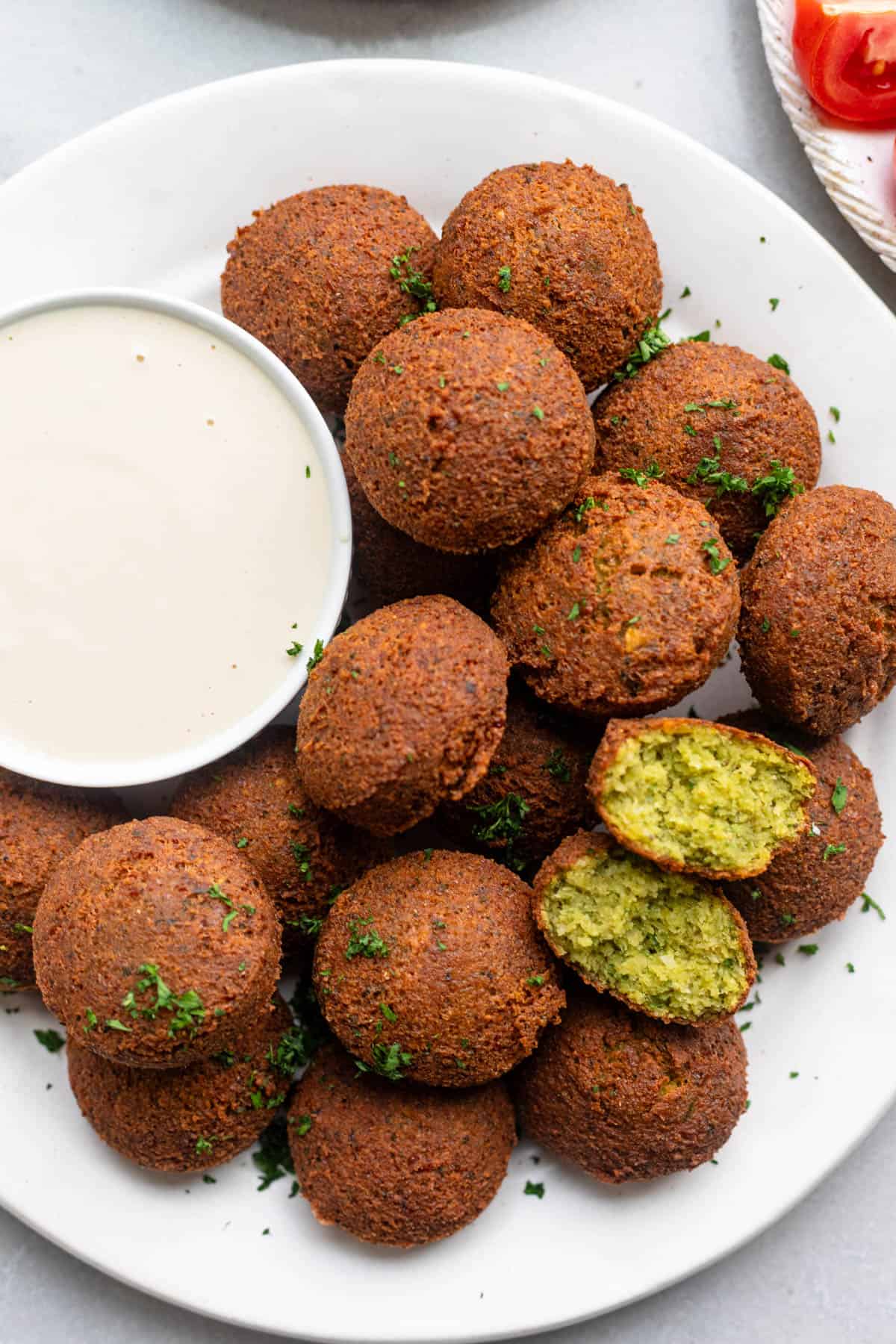
Jump to Section
- What is Falafel?
- Recipe At A Glance
- Recipe Video Tutorial
- Ingredients to Make Authentic Falafel
- How to Make the Falafel Batter
- How to Make the Crispy Falafel Balls
- Other Methods of Cooking Falafel
- Tips for Making the Best Middle Eastern Falafel
- What to Serve With Falafel
- Freezing Falafel Mix
- Frequently asked questions
- More Lebanese Recipes:
- Crispy Falafel Recipe
Making these falafels is like taking a journey back in time. The process, from soaking the chickpeas to blending them into a thick paste with herbs and spices, is done with patience and care. As I fry each batch of falafel, turning them until they’re just the right shade of brown and listening to them sizzle, I’m reminded of the power of food to connect us to our past, to each other, and to the simple pleasures that life has to offer. This falafel recipe isn’t just a meal; it’s a celebration of heritage and the enduring bonds of family.
This recipe is part of our monthly Cooking Challenge for April 2024!
What is Falafel?
Falafel is a Middle Eastern recipe that is basically mashed chickpeas with herbs and seasonings formed into patties and fried. It’s a traditional food in Lebanon that’s made with only a few ingredients and served plain with tahini sauce, hummus, or garlic sauce for dipping, or as a falafel sandwich or falafel wrap. The patties have an irresistible crispy exterior and soft bright green interior.
While falafel originated in the Middle East, falafel is now a very popular street food recipe that’s made all over the world. There are loads of recipe variations, but at its core is soaked chickpeas, parsley and/or cilantro and Middle Eastern seasoning. In many regions, it’s also made with fava beans.
Recipe At A Glance
Cuisine Inspiration: Middle Eastern
Primary Cooking Method: Stovetop
Dietary Info: Dairy Free, Vegan
Key Flavor: Herby with a hint of spice
Skill Level: Intermediate
Recipe Video Tutorial
Please note that this recipe video for falafel is from the original recipe, and has only slightly changed to use more garlic.
Ingredients to Make Authentic Falafel

- Chickpeas: Use high quality dry chickpeas that come in a bag. Check the expiration date to make sure they are fresh. Do not substitute with canned chickpeas.
- Fresh herbs: Parsley and cilantro are a must in any falafel recipe. You can do equal parts of both or add more of one kind if you prefer. Make sure the herbs are washed and thoroughly dried.
- Onion: 1 small onion is all you need. Don’t substitute onion powder because the fresh onions add texture, a touch of moisture and extra flavor to the patties.
- Garlic: Surprisingly, garlic is not mandatory in this falafel recipe, but garlic does help add flavor. You can substitute garlic powder here if you’d like, but I recommend fresh.
- Baking powder: This is optional, but I recommend adding it right before baking or frying the falafel. It’s a raising agent that helps to give it a light and fluffy texture. You can also use baking soda, but it may leave a more metallic taste. I prefer baking powder—make sure it’s aluminum free!
- Seasonings: Salt and pepper, cumin, and coriander.
How to Make the Falafel Batter
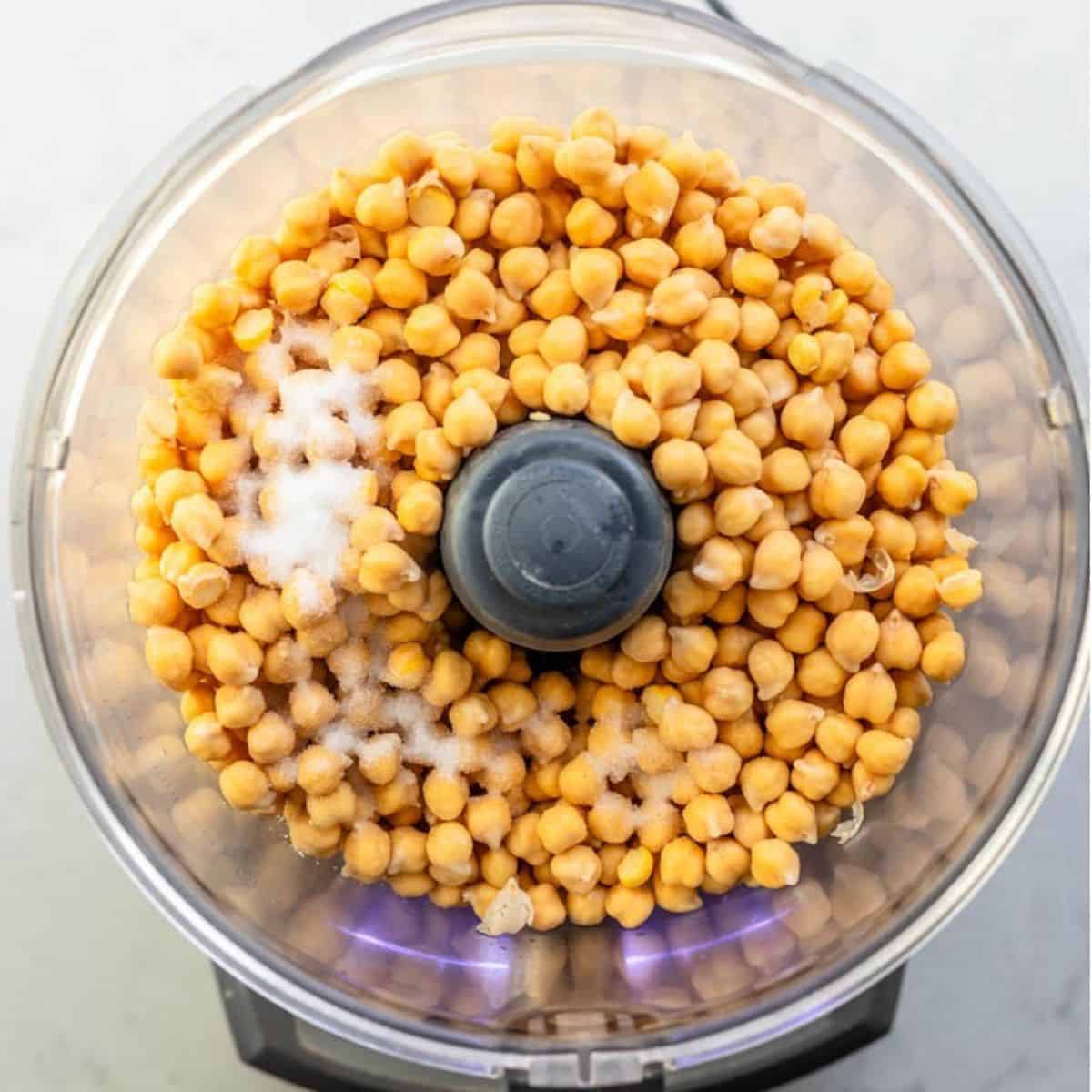

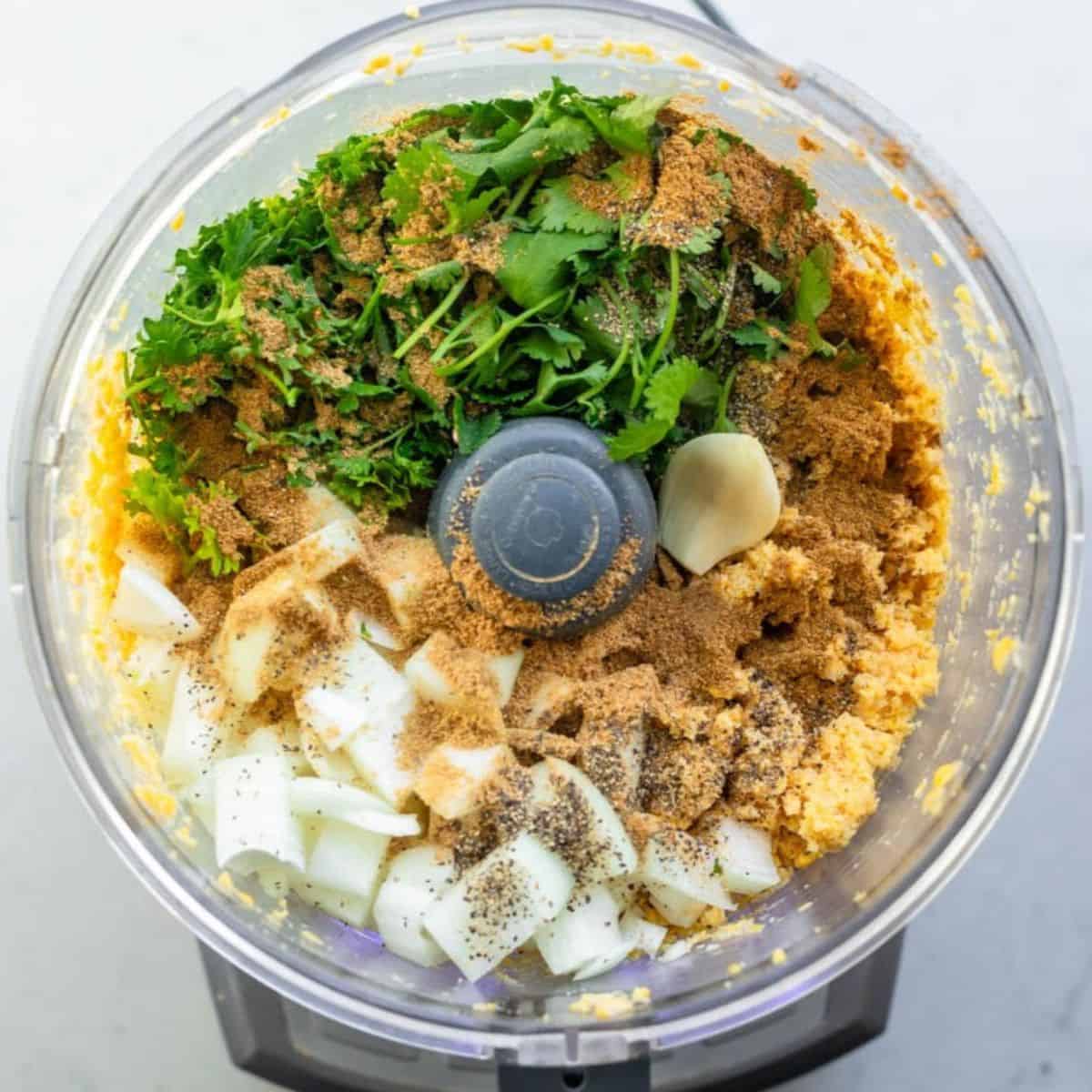
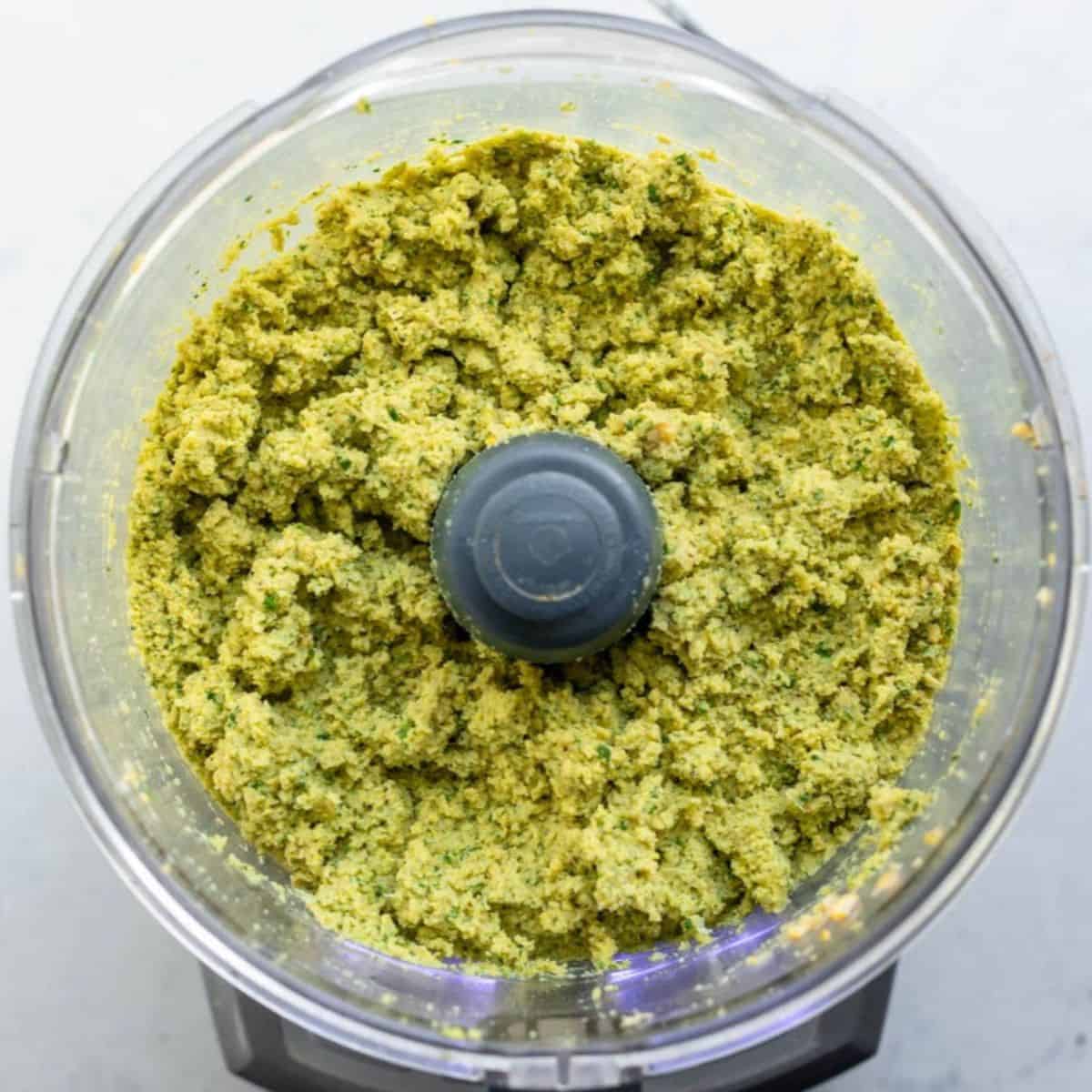
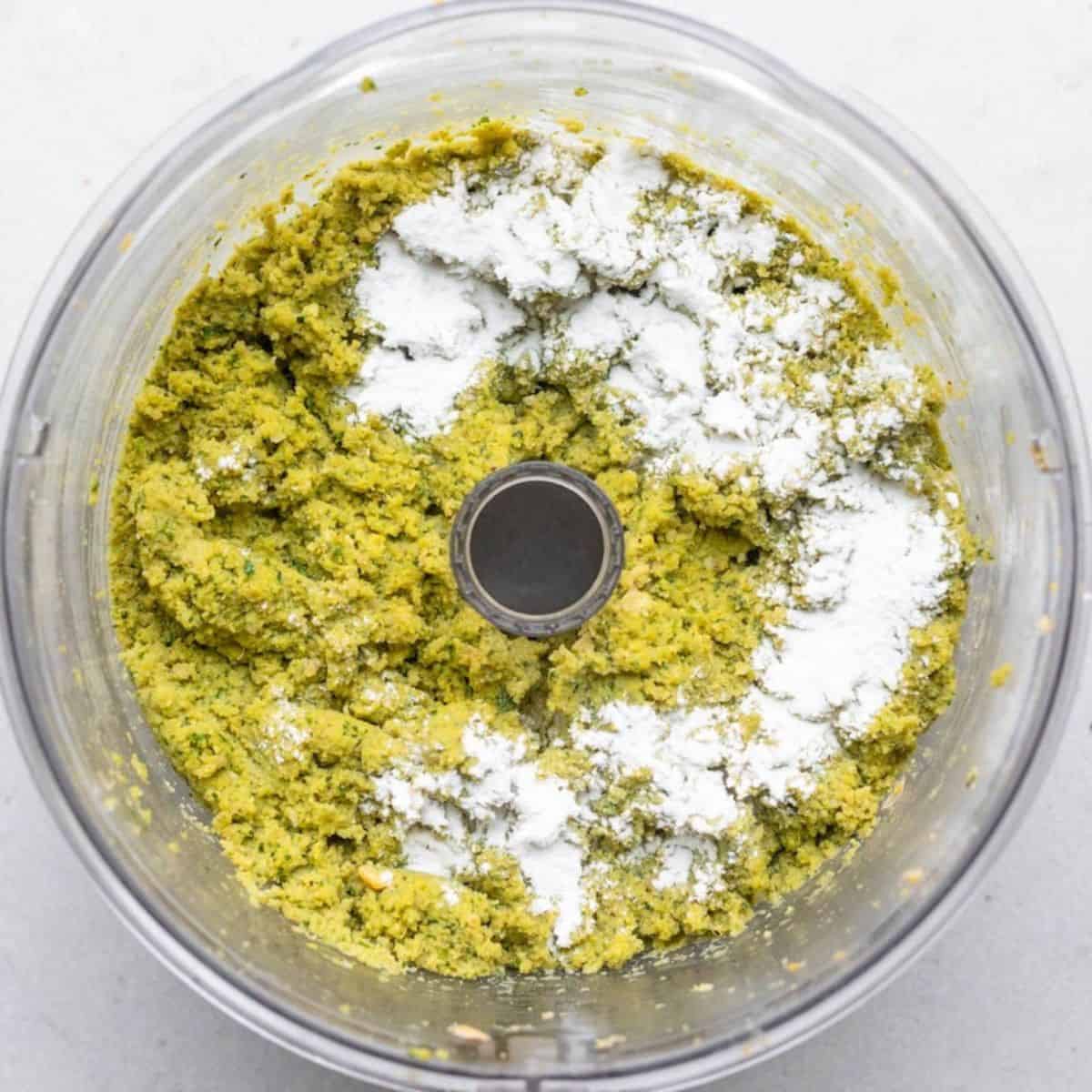
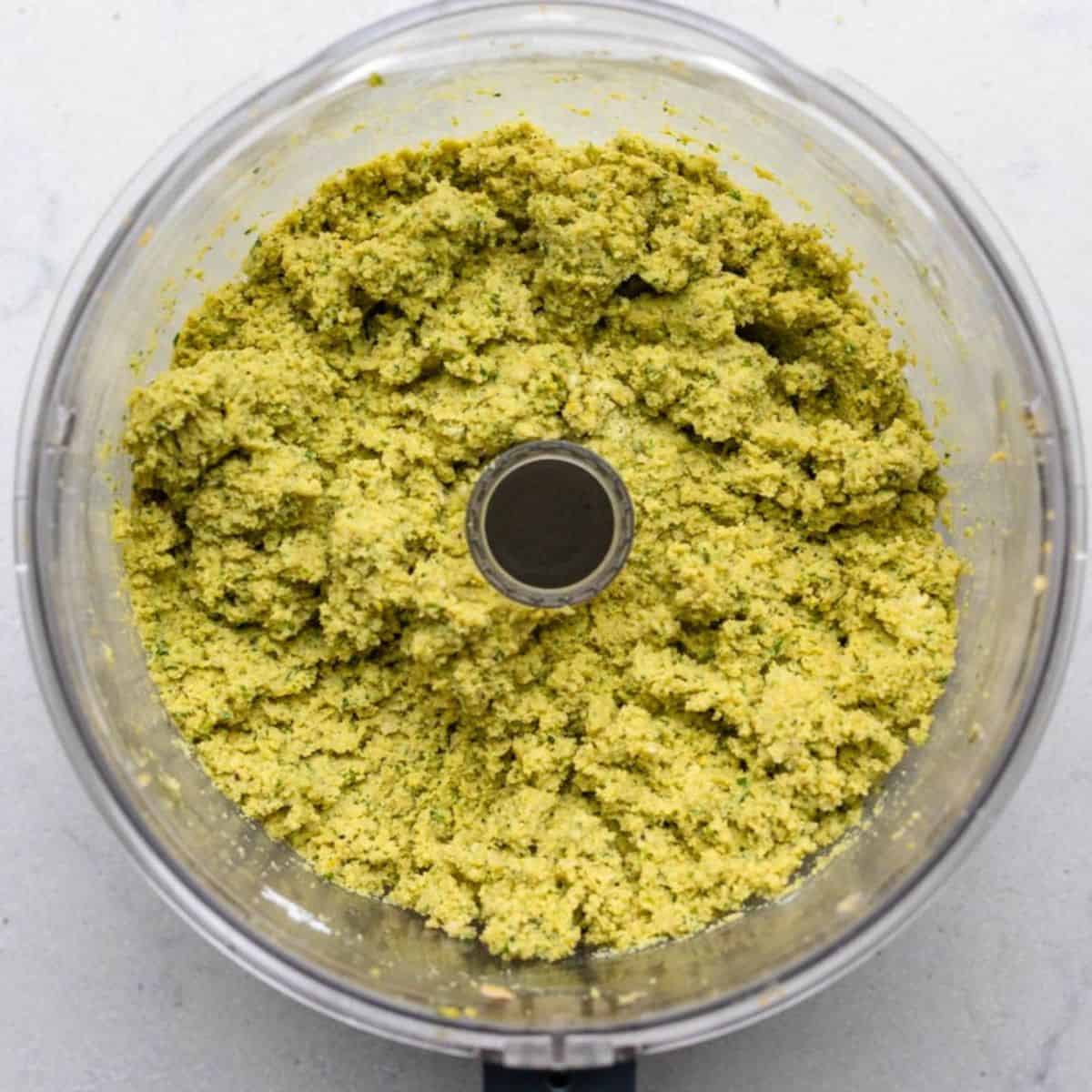
How to Make the Crispy Falafel Balls
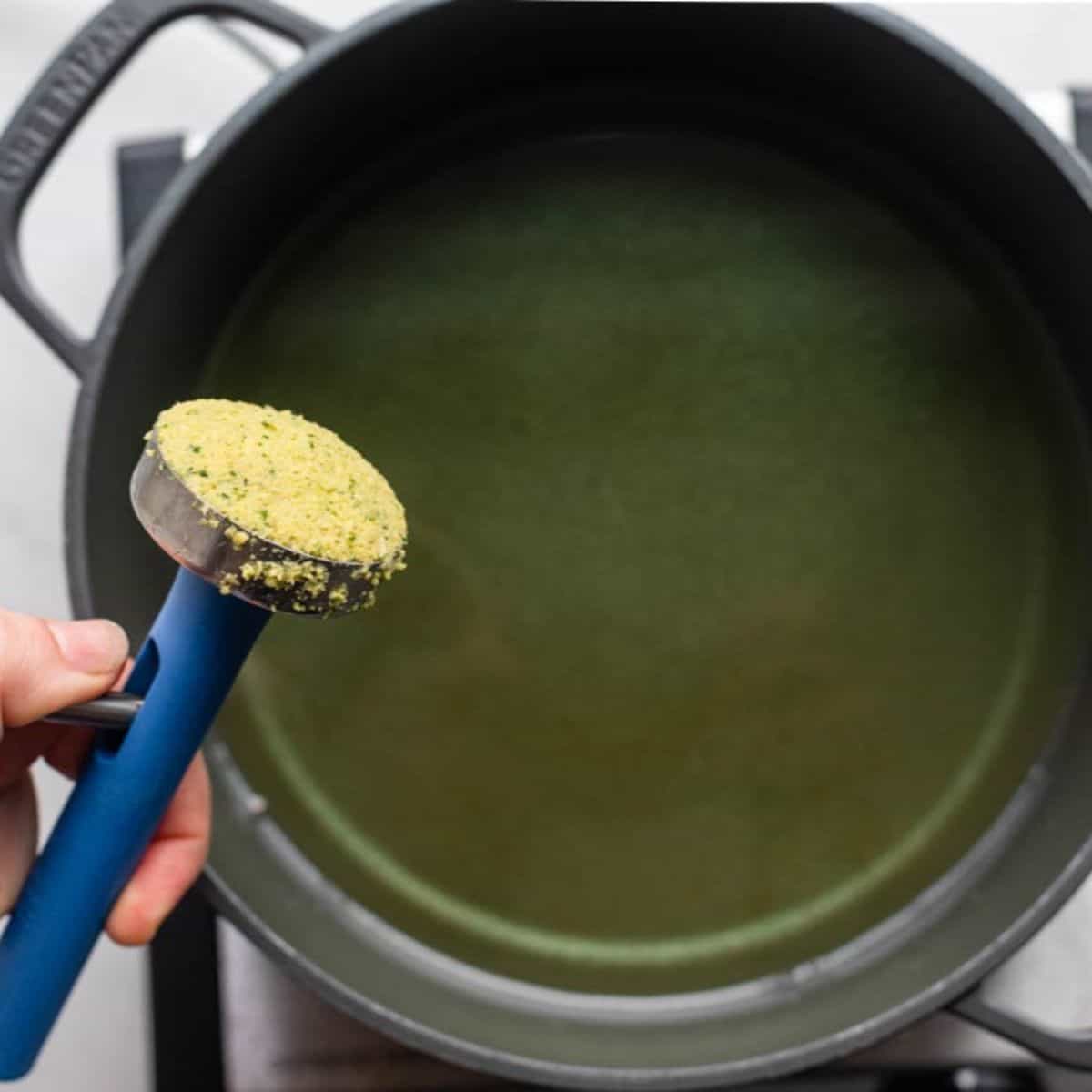

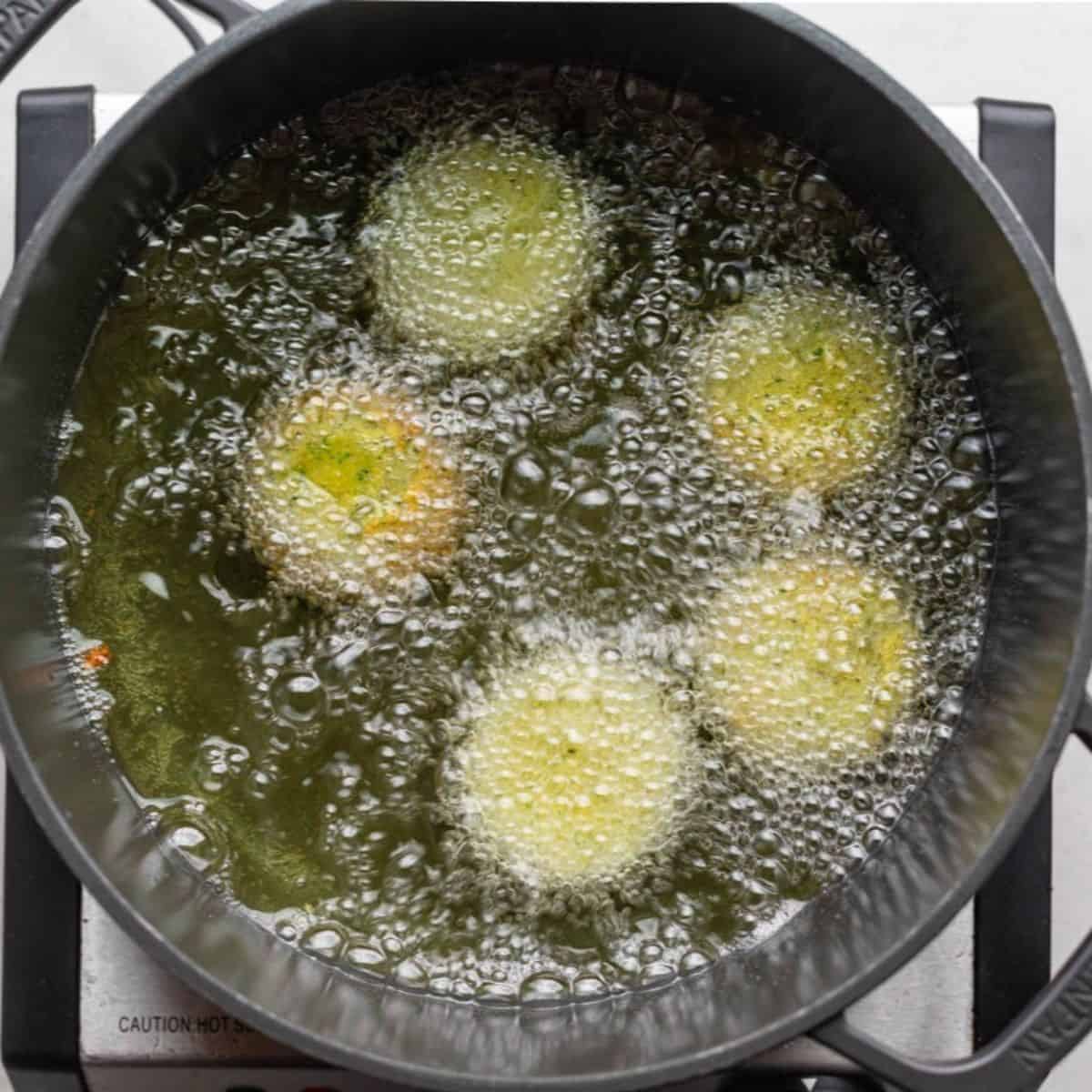
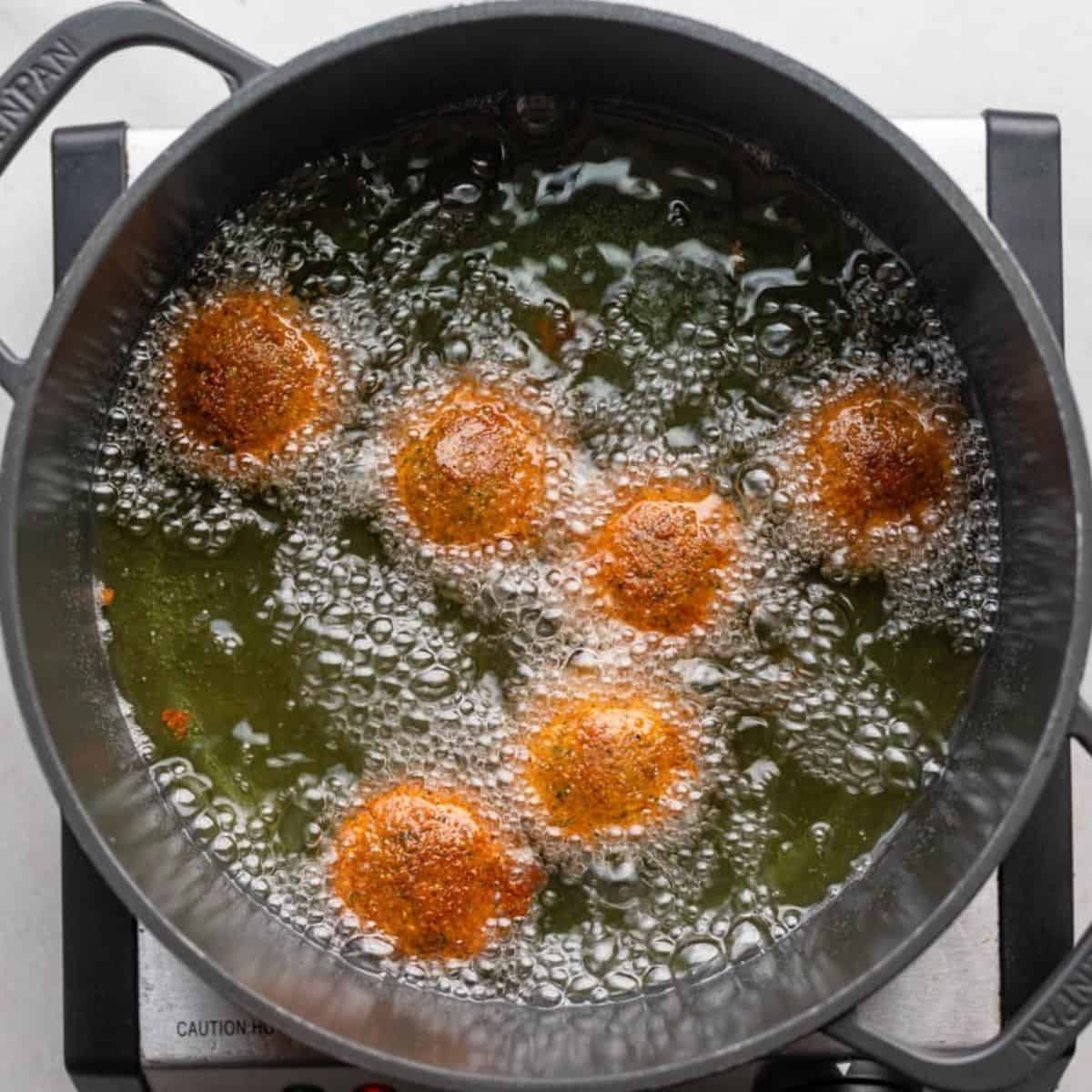
Other Methods of Cooking Falafel
- Air Fryer: I’ve got a whole recipe post with how to instructions for making falafel in the air fryer! It’s super simple and does cut down on the oil.
- Baking in the oven: If you really want crispy falafel pan frying, or the air fryer is going to be your best option, but you can still make falafel in the oven if you want. Follow the recipe below for making the falafel balls; place each ball on a parchment-lined baking sheet, leaving about 1/2in of space between them. Spray them with cooking spray. Preheat the oven to 375°F and bake for about 25-30 minutes, turning them halfway through the baking time to ensure they get crispy on all sides. The falafels are done when they are golden brown and crispy on the outside. If you prefer them extra crispy, you can leave them in for a few additional minutes, watching closely to ensure they don’t burn.
Tips for Making the Best Middle Eastern Falafel
- Do not use canned chickpeas! Use dried chickpeas and soak them. This is the most important tip when making your own falafel. The problem with canned chickpeas is they are too soft and moist to yield a crispy exterior falafel texture. If you do use canned chickpeas, you’ll have to compensate for the moisture by adding flour, which changes the essence of the recipe.
- Allow time for the mixture to set in the fridge. This time helps the ingredients bind well together and also helps the flavor develop in the mixture; so don’t skip the resting time in the fridge.
- Make sure the patties hold well together before frying. The mixture should feel moist and paste-like, but not too wet. It should feel compact before dropping it in the oil. If it’s not, you may need to pulse it more in the food processor until it comes together.
- Use a high smoke point oil for frying. Some olive oils may work for this depending on their smoke point. But to be safe, use an oil meant for deep frying like grapeseed oil, sunflower oil or canola oil.
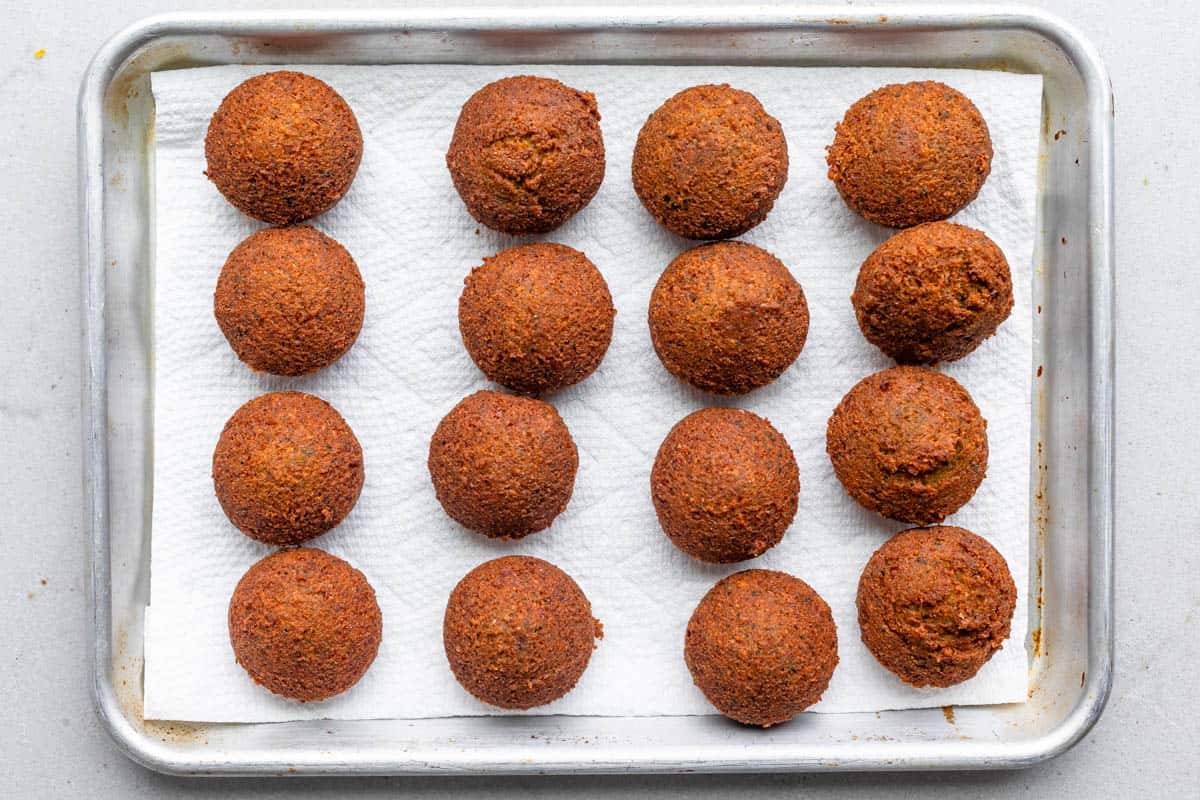
What to Serve With Falafel
- With falafel sauce Tahini Sauce, hummus or garlic sauce.
- As a sandwich or wrap, stuffed in a pita with tomatoes, pickles, onions, parsley and sauce.
- On top of a salad, such as
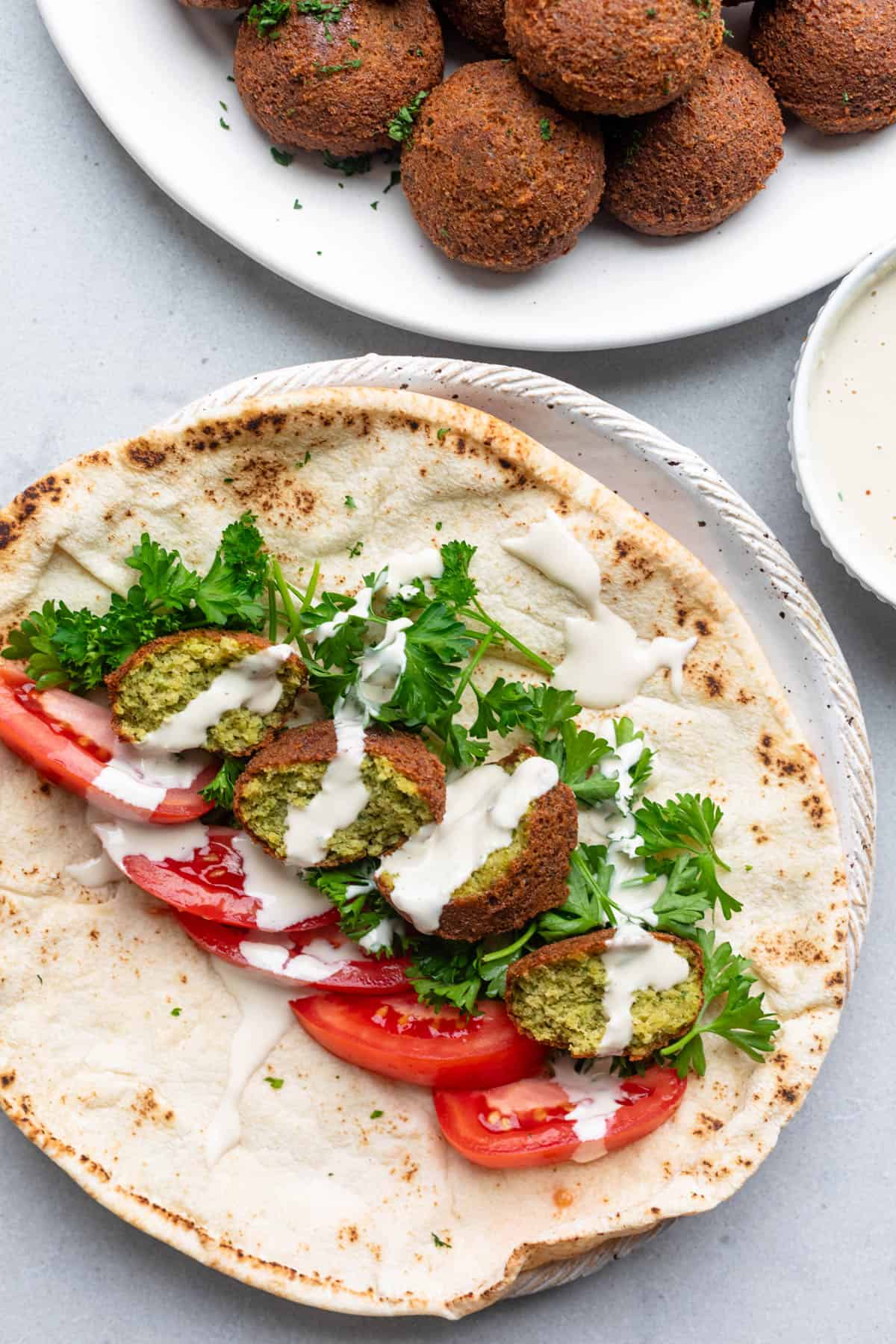
Freezing Falafel Mix
Freezing your falafel mix is a great way to have a quick meal prep solution on hand. It’s simple and you’ll thank yourself on those busy days when you need a meal quickly. Here’s how to do it:
- Prepare the Falafel Mix: Follow the falafel recipe up until the point where you would add the baking powder. Make sure your mix is well combined and ready to go.
- Portion the Mix: If you have a specific meal size in mind, portion your mix accordingly. This could be the amount you’d need for one family dinner or single servings, depending on your needs.
- Packaging: Lay out a freezer-safe zip-top bag and spoon the falafel mix into it. Flatten the mix in the bag, pushing out as much air as possible before sealing. This not only saves space but also makes it easier to break off just what you need later.
- Labeling: Don’t forget to label the bag with the date and contents. Falafel mix can be frozen for up to 3 months.
- Freezing: Place the bag flat in the freezer. If you’ve divided the mix into portions, you can freeze them separately, or you can freeze the mix as one flat block and break off pieces as needed.
- Cooking from Frozen: When you’re ready to cook, you can thaw the mix in the fridge overnight, or if you’ve frozen it flat and thin enough, you might be able to thaw at room temp in just a couple of hours. Just add the baking powder, mix, shape and fry per the recipe’s instructions below.
By freezing your falafel mix, you’re setting yourself up for an easy and delicious meal that can be cooked up with no fuss. Plus, it’s a great way to keep the mix fresh and reduce food waste.
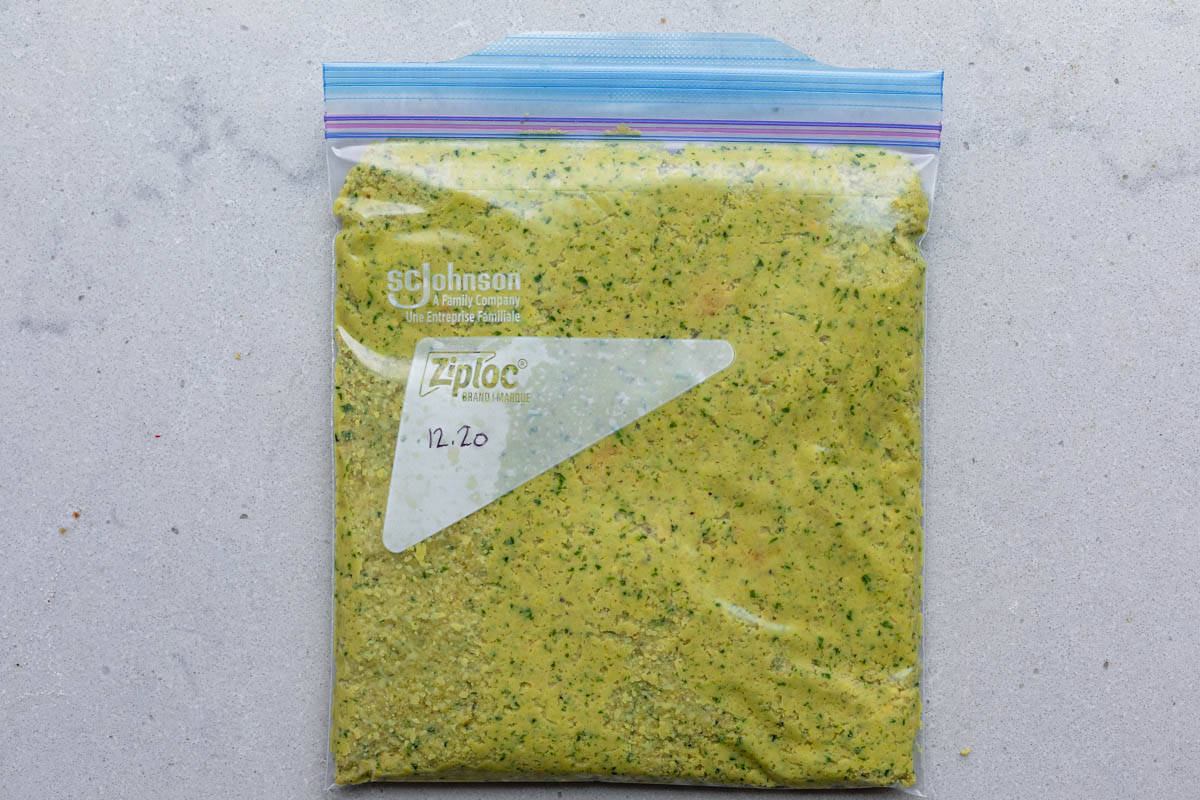
Frequently asked questions
Once cooled, place your falafel in an airtight container. You can layer them between sheets of parchment paper to prevent sticking. They’ll stay fresh in the fridge like this for up to 5 days. Keeping them in a tightly sealed container helps maintain their texture and flavor.
Reheating Falafel: To bring back that fresh, crispy texture, reheat your falafel in the oven at 350°F (175°C) for about 10 minutes, or until they’re heated through and crispy on the outside. You can also reheat them in an air fryer at 375°F for 3-5 minutes.
To Freeze Falafel: Place cooled falafel on a baking sheet in a single layer and freeze until solid. Transfer them to a freezer bag or airtight container and freeze for up to 3 months. To reheat, bake frozen falafel in the oven at 350°F for about 15 minutes or until hot and crispy. No need to thaw!
Because there are minimal ingredients in this homemade falafel recipe, the herbs make up a big roll in the texture and flavor. I do not recommend substituting with dried herbs.
You can use a thermometer to check that the oil is around 350°F/175°C. Without a thermometer, drop a small piece of the mixture into the oil. If it sizzles immediately without burning, the oil is ready.
Yes, you can use a potato masher or a fork, but it will require more effort to achieve the fine texture needed. The mixture should not have large chunks, or it will not hold together well.
Falafel can fall apart if the mixture is too wet or hasn’t been processed enough to create the right consistency. Ensure that your chickpeas are well ground and that the mixture holds together when pressed. It’s important to dry the chickpeas really well after soaking.
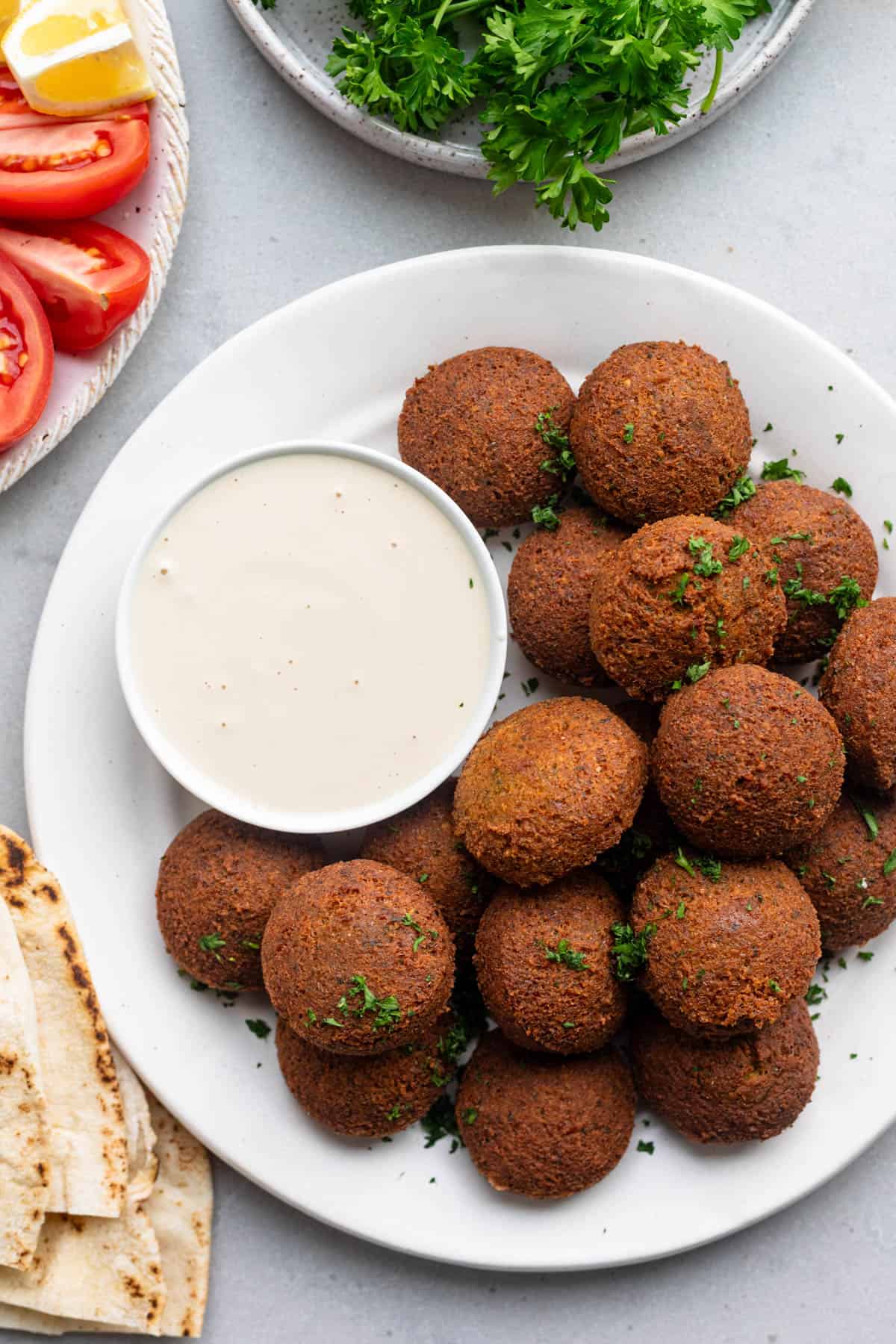
There we have it, a plate of falafel that’s as close to my family’s Lebanese kitchen as you can get without a plane ticket. Making them always takes me back to my roots, and there’s nothing quite like seeing that same enjoyment in the eyes of my family and friends. Whether you’re trying these out for the first time or you’re a seasoned falafel maker, I hope this recipe adds a bit of warmth and flavor to your gatherings.
More Lebanese Recipes:
- Chicken Shawarma Salad
- Kibbeh
- Beef Shawarma
- Shawarma Pita Pizza
- Chicken Shish Tawook
- Zaatar Manakeesh
- Ful Medames
- Mujadara Hamra
- Ejjeh {Lebanese Omelette}
If you’ve tried this healthy-ish feel good Lebanese Falafel recipe or any other recipe on Feel Good Foodie, then don’t forget to rate the recipe and leave me a comment below! I would love to hear about your experience making it. And if you snapped some shots of it, share it with me on Instagram so I can repost on my stories!
This falafel recipe was originally published July 30, 2019 and has recently been updated with new photography and step-by-step collage to better help make the recipe.
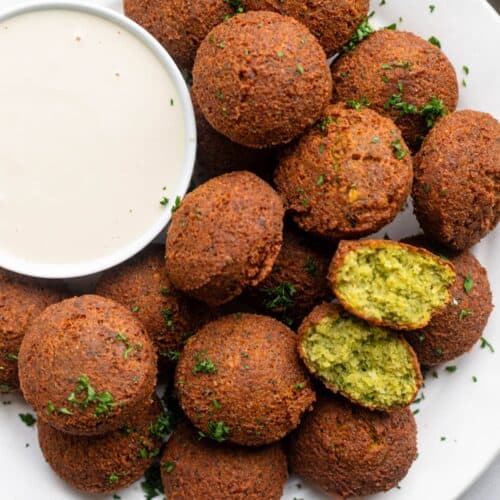
Crispy Falafel Recipe
Video
Ingredients
- 1 pound dry uncooked chickpeas
- 1 tablespoon salt
- ¾ cup parsley
- ½ cup cilantro
- 1 large onion roughly chopped
- 1 clove garlic
- 2 teaspoons cumin
- 2 teaspoons coriander
- 1 teaspoon black pepper
- 1 teaspoon baking powder
- Neutral oil for frying
- Tahini sauce
Instructions
- Cover the chickpeas with water in a medium bowl. Set aside at room temperature to soak for at least 12 or up to 24 hours. They will end up doubling in size.
- Drain the chickpeas. Rinse and dry them as thoroughly as possible — I like to use a salad spinner for this.
- Place the chickpeas and salt in the bowl of a food processor. Pulse to fine, pebble-sized pieces. Add the parsley, cilantro, onion, garlic, cumin, coriander, and black pepper. Blend until the mixture turns into a thick paste, scraping down the sides as needed. Remove the blade from the bowl, then cover the bowl of the food processor and refrigerate for 1 hour (this lets allows the batter to set).
- Remove the falafel batter from the fridge. Sprinkle the baking powder over the top, then gently fold it throughout.
- Line a baking sheet with parchment paper and another baking sheet with a double layer of paper towels. Set aside.
- Using a medium spring-loaded cookie scoop (or your hands), scoop, firmly pack, and roll about 1 ½ tablespoons of batter into a round ball and add it to the parchment-lined baking sheet. Repeat with the remaining batter. Don’t worry if the balls feel a little loose at first — they will bind once they fry.
- Heat 1 inch of oil in a large, high-sided frying pan over medium heat. When a small piece of batter dropped into the oil begins to sizzle, carefully add 10 to 12 of the balls, being careful not to crowd the pan. Fry until golden-brown and crispy, 3 to 3 ½ minutes per side. Using a slotted spoon, transfer the cooked falafel to the paper-towel-lined baking sheet. Repeat with the remaining uncooked falafel.
- Transfer the falafel to a serving platter alongside the tahini sauce for dipping. Serve warm.
Equipment
Notes
- Instead of using only chickpeas, you can add some soaked fava beans as well to the mixture. I don’t recommend completely substituting with only fava beans though.
- You can use only parsley or only cilantro if you prefer, but it’s best made with both types of fresh herbs.
-
Place the falafel balls on a baking sheet lined with parchment paper. Bake in the preheated oven at 350°F for 20-25 minutes, flipping halfway through.
Nutrition
Nutrition information provided is an estimate. It will vary based on cooking method and specific ingredients used.






Comments
I love falafel, and this recipe and tutorial was so easy to follow. The falafel were tender on the inside and crispy on the outside. So good!🙂
Yay!! So happy you loved it!
This recipe is so yummy, thank you for sharing. It’s my first time making it and boy did they come out tasty. Wish I could’ve shared a pic of them. Also made the tahini sauce, after the tasting I added a little bit more lemon juice – other than that made it to recipe. I used canola oil to fry them. Oh, I began searching for recipes after ordering them out at Redding Station in Philadelphia and a restaurant in south Jersey- $7.50 for 4 and 14.99 for 3 pieces respectively.
So glad you loved it, Kimberly!! Thank you so much!
Very authentic
Thanks, Joan! So glad you liked it!
Hi! New subscriber here and LOVE what I see! Can’t wait to start cooking. Can I used canned chickpeas for this recipe, and if so, how many cups/cans?
Hi there! I don’t recommend using canned chickpeas, the texture won’t be right. It’s best to use dried chickpeas and soak them overnight. Enjoy!!
See All Comments